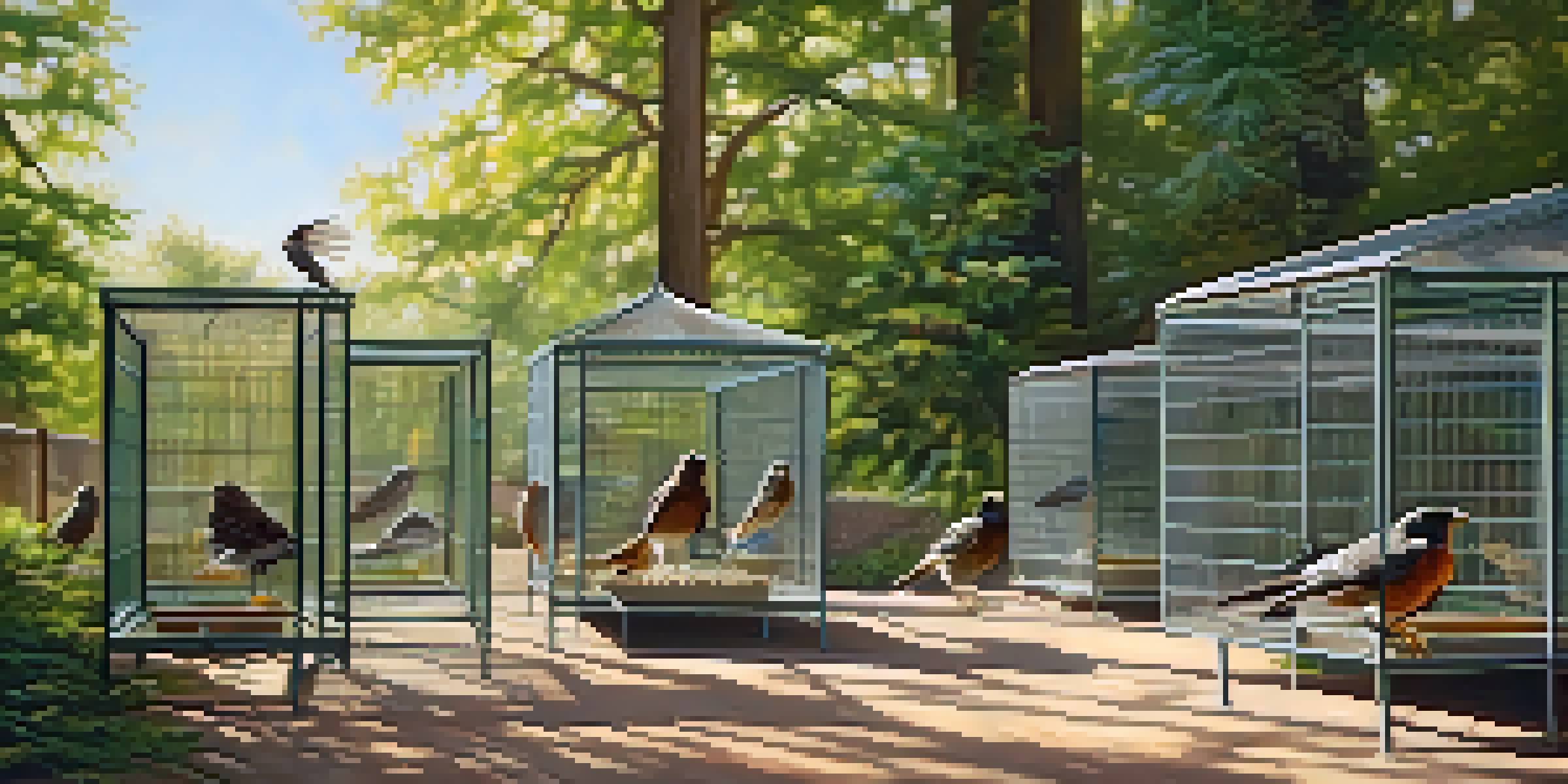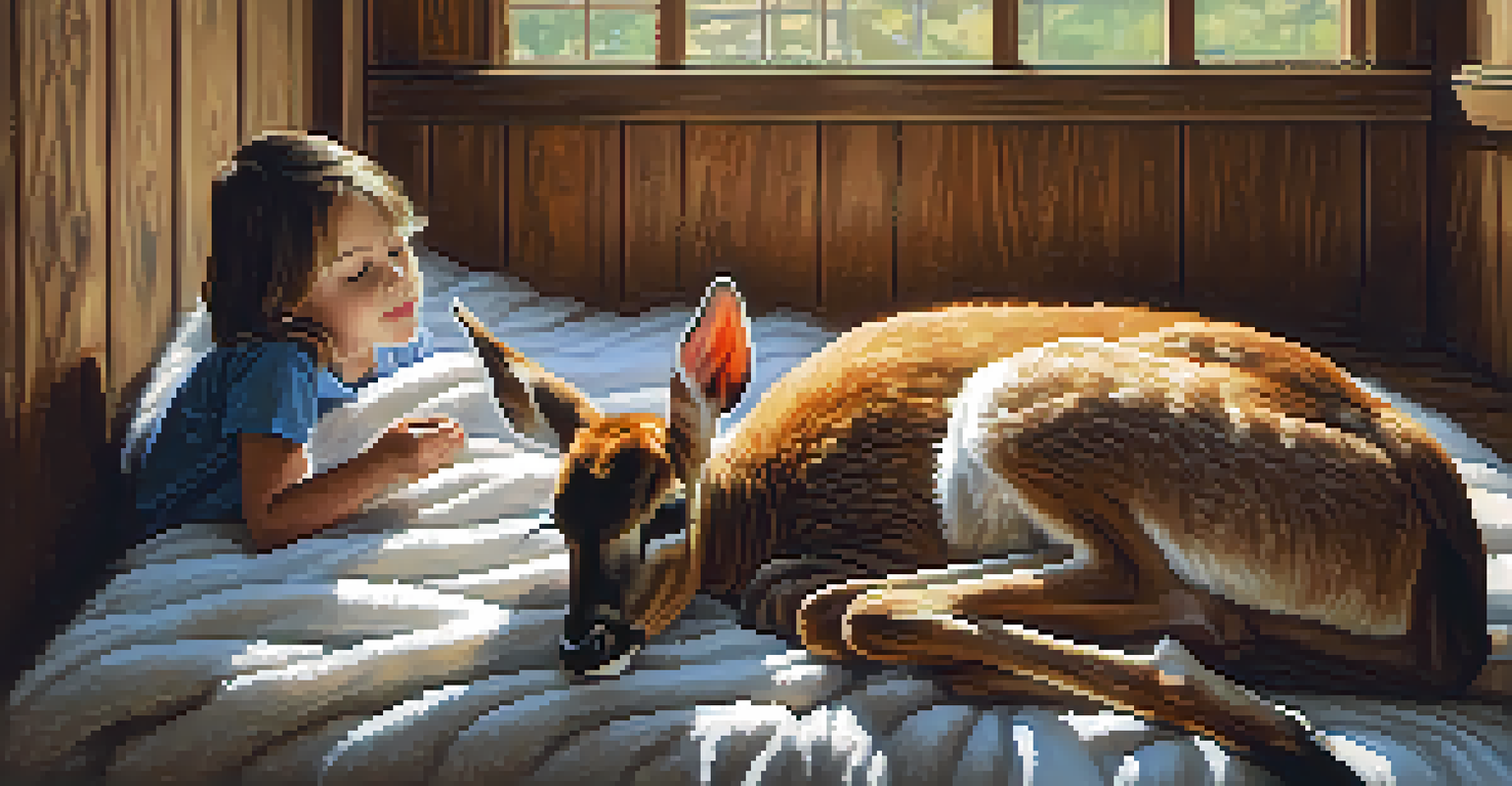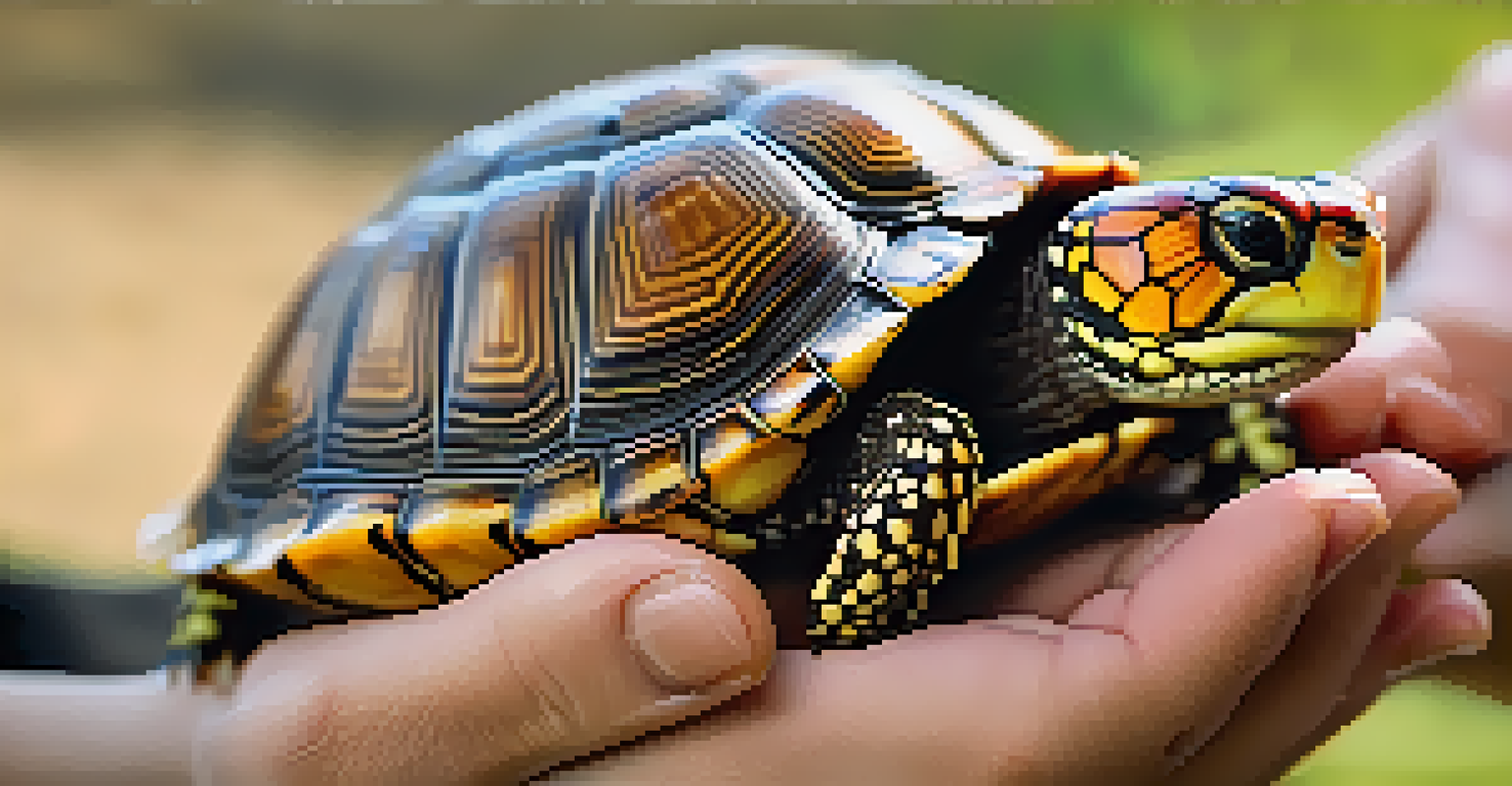Common Wildlife Species Rescued in Colorado Rehabilitation Centers

Understanding Colorado's Unique Wildlife Rehabilitation Needs
Colorado's diverse ecosystems host a wide array of wildlife, making rehabilitation centers vital for many species. From the soaring mountains to lush forests, animals often find themselves in peril due to habitat loss, vehicle collisions, or human interaction. Rehabilitation centers play a crucial role in providing care and support to these injured or orphaned animals, helping them regain their strength and return to the wild.
The greatness of a nation and its moral progress can be judged by the way its animals are treated.
These centers are staffed by dedicated professionals and volunteers who understand the specific needs of the state's wildlife. They work tirelessly to nurse animals back to health, ensuring they are fit for reintroduction into their natural habitats. The rehabilitation process is not just about physical healing; it also involves behavioral training to prepare animals for life after recovery.
Understanding the common species that come through these centers aids in awareness and conservation efforts. By knowing which animals are most often rescued, we can better address the issues contributing to their distress and work towards a healthier ecosystem overall.
Birds: A Common Sight in Colorado Rehabilitation Centers
Birds are frequently rescued in Colorado, with species like the American Robin, Red-tailed Hawk, and Western Bluebird topping the list. Many of these birds end up in rehabilitation due to window collisions, injuries from predators, or entanglement in human-made debris. Once admitted, these birds receive medical care, a safe environment, and food tailored to their species until they're ready for release.

One of the most heartwarming aspects of bird rehabilitation is witnessing their recovery process. Staff often use techniques like flight cages, allowing birds to regain their strength and practice flying before returning to the wild. This gradual approach helps ensure they are capable of thriving in their natural habitat once released.
Rehabilitation Centers Save Wildlife
Colorado's wildlife rehabilitation centers play a crucial role in rescuing and caring for injured or orphaned animals, helping them return to their natural habitats.
Birds play an essential role in our ecosystems, from pollinating plants to controlling insect populations. By rehabilitating these feathered friends, we not only give them a second chance but also help maintain the delicate balance of Colorado's wildlife.
Mammals: Rescued Species You Might Encounter
Mammals such as raccoons, deer, and foxes are among the most commonly rescued species in Colorado. These animals often find themselves in tricky situations—whether it’s getting caught in fences, being orphaned, or suffering from vehicle-related injuries. Rehabilitation centers provide specialized care to help these creatures recover and learn essential survival skills.
Wildlife conservation is the preservation of the world's plants and animals, and their habitats, for future generations.
For instance, young deer, or fawns, are often brought in after their mothers have been hit by cars. Rehabilitation staff must be especially careful in these cases, as the goal is to ensure the fawn can eventually fend for itself in the wild. This involves not only medical care but also creating a safe environment that mimics their natural habitat.
Foxes, on the other hand, may be rescued due to urban encroachment, which leads to conflicts with humans. Educating the public about how to coexist with these mammals is a crucial aspect of wildlife rehabilitation, helping to reduce future incidents and promote a harmonious relationship between humans and wildlife.
Reptiles: A Look at Colorado's Cold-blooded Residents
Reptiles may not be as commonly thought of when discussing wildlife rehabilitation, but they also play a significant role in Colorado’s ecosystem. Species like the Western Box Turtle and various snakes often find their way to rehabilitation centers due to injuries or habitat destruction. These cold-blooded creatures have unique needs, requiring specialized care and environments to aid in their recovery.
For example, turtles rescued from roads or human disturbances need proper aquatic and terrestrial environments to thrive. Staff must ensure they receive the right temperature and humidity levels, which are crucial for their healing process. Once rehabilitated, these turtles are often released back into areas where they can safely bask and forage.
Education Promotes Wildlife Awareness
Educational programs at rehabilitation centers foster a deeper understanding of local wildlife and encourage responsible behaviors to protect their habitats.
Snakes, which might be brought in due to injuries from lawnmowers or other machinery, also require specific care. Rehabilitation centers educate the public about the importance of these reptiles in controlling pest populations and encourage safe practices to coexist peacefully with them in the wild.
Small Mammals: The Unsung Heroes of Rehabilitation
Small mammals, such as rabbits, squirrels, and chipmunks, often fill the rehabilitation centers in Colorado. These critters are frequently affected by urban development, leading to injuries or orphaned young. Rehabilitation efforts focus on nurturing these small animals back to health and preparing them for life in the wild.
For instance, a young bunny may come in after being separated from its mother during a storm. Staff provide appropriate feeding and shelter while working to reintroduce the bunny to a safe environment. It's a delicate process, as young animals must learn vital survival skills before being released.
These small mammals are crucial to the ecosystem, serving as prey for larger animals and contributing to the food web. By rehabilitating them, centers help ensure that these species continue to thrive in Colorado’s diverse landscapes.
The Role of Education in Wildlife Rehabilitation
One of the key aspects of wildlife rehabilitation is education. Many centers in Colorado prioritize teaching the public about local wildlife, their habitats, and the challenges they face. Educational programs help to foster a deeper understanding and appreciation of the state’s diverse species, encouraging responsible behaviors towards wildlife.
Workshops, school programs, and community outreach initiatives are designed to inform people about the effects of human activity on wildlife. For example, learning how to safely navigate roads to avoid deer collisions can save countless lives. Such initiatives empower individuals to take action, whether it’s reporting injured animals or creating wildlife-friendly spaces.
Community Support is Essential
Volunteers and community contributions are vital for the operation of wildlife rehabilitation centers, ensuring they can provide necessary care for injured animals.
Education not only benefits the animals but also strengthens the community's connection to nature. By actively engaging with local wildlife issues, residents can contribute to conservation efforts and help create a more harmonious coexistence with the animals that share their environment.
Support and Volunteer Opportunities at Rehabilitation Centers
Wildlife rehabilitation centers are often nonprofit organizations that rely on community support and volunteers. People can contribute in various ways, from financial donations to hands-on volunteering. This support is crucial for the operation of these centers, which provide essential care and rehabilitation to injured and orphaned wildlife.
Volunteering at these centers can be an incredibly rewarding experience. Whether assisting with feeding animals, maintaining habitats, or participating in educational programs, volunteers play a vital role in the daily operations. It’s a chance to learn about wildlife rehabilitation while making a tangible difference in the lives of the animals.

Community involvement not only helps the centers thrive but also fosters a sense of stewardship for Colorado’s wildlife. By supporting rehabilitation efforts, individuals can help ensure that injured animals receive the care they need and that the local ecosystem remains vibrant and healthy.
The Importance of Wildlife Rehabilitation in Conservation
Wildlife rehabilitation is a critical component of conservation efforts in Colorado. By rescuing and rehabilitating injured animals, centers contribute to maintaining healthy populations of various species. This work not only benefits individual animals but also supports the broader ecological balance within the state’s diverse ecosystems.
Rehabilitation efforts also highlight the impact of human activities on wildlife populations. By addressing issues such as habitat loss and pollution, rehabilitation centers raise awareness about the urgent need for conservation measures. This advocacy is essential for creating policies that protect wildlife and their habitats.
Ultimately, the work done in rehabilitation centers transcends individual animal care; it's about nurturing a healthier environment for all species. By supporting these efforts, we can all play a part in ensuring that Colorado’s wildlife continues to thrive for generations to come.